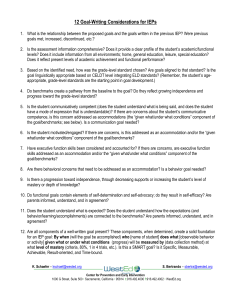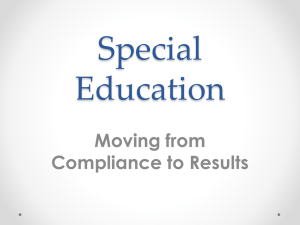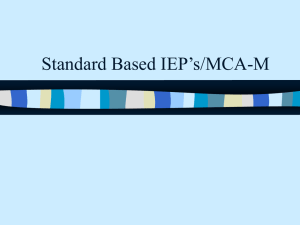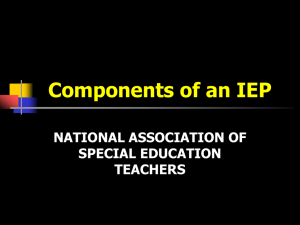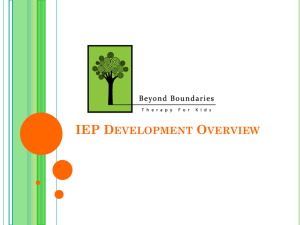Seven Step Process to Creating Standards-based IEPs - Ross
advertisement
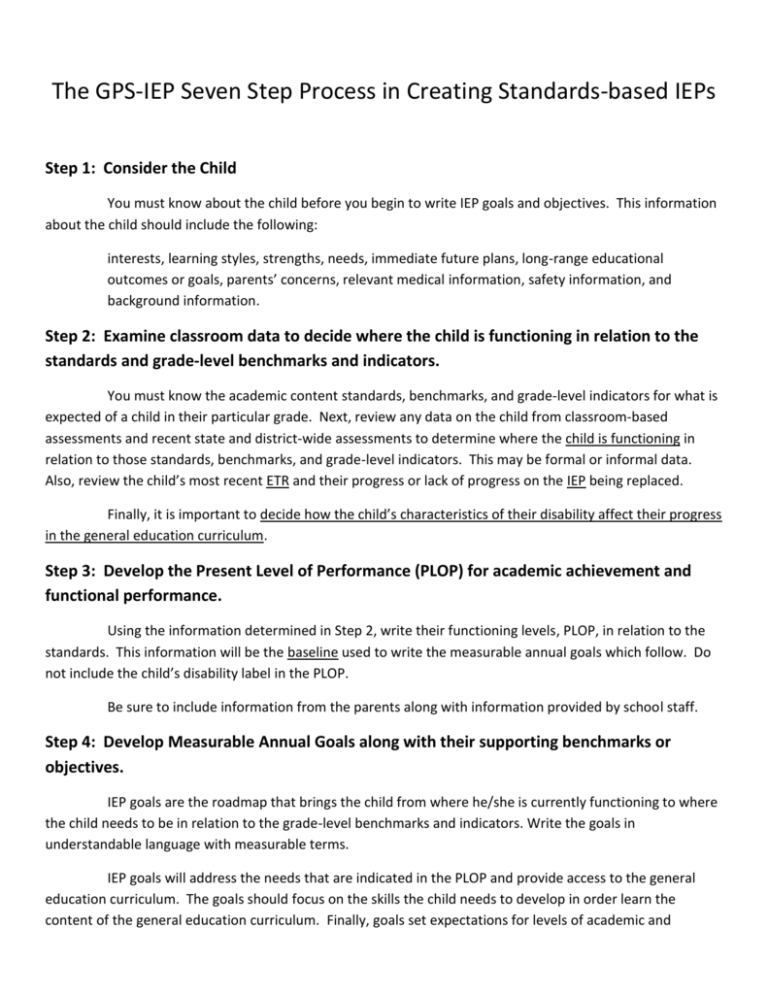
The GPS-IEP Seven Step Process in Creating Standards-based IEPs Step 1: Consider the Child You must know about the child before you begin to write IEP goals and objectives. This information about the child should include the following: interests, learning styles, strengths, needs, immediate future plans, long-range educational outcomes or goals, parents’ concerns, relevant medical information, safety information, and background information. Step 2: Examine classroom data to decide where the child is functioning in relation to the standards and grade-level benchmarks and indicators. You must know the academic content standards, benchmarks, and grade-level indicators for what is expected of a child in their particular grade. Next, review any data on the child from classroom-based assessments and recent state and district-wide assessments to determine where the child is functioning in relation to those standards, benchmarks, and grade-level indicators. This may be formal or informal data. Also, review the child’s most recent ETR and their progress or lack of progress on the IEP being replaced. Finally, it is important to decide how the child’s characteristics of their disability affect their progress in the general education curriculum. Step 3: Develop the Present Level of Performance (PLOP) for academic achievement and functional performance. Using the information determined in Step 2, write their functioning levels, PLOP, in relation to the standards. This information will be the baseline used to write the measurable annual goals which follow. Do not include the child’s disability label in the PLOP. Be sure to include information from the parents along with information provided by school staff. Step 4: Develop Measurable Annual Goals along with their supporting benchmarks or objectives. IEP goals are the roadmap that brings the child from where he/she is currently functioning to where the child needs to be in relation to the grade-level benchmarks and indicators. Write the goals in understandable language with measurable terms. IEP goals will address the needs that are indicated in the PLOP and provide access to the general education curriculum. The goals should focus on the skills the child needs to develop in order learn the content of the general education curriculum. Finally, goals set expectations for levels of academic and functional achievement for the one year term of the IEP. An annual IEP goal has six critical elements that may appear in any order. These elements are discussed in a companion handout with examples. The IEP team may decide to use either benchmarks or objectives to describe how the child will reach the annual goals. They are used to monitor progress throughout the year. These also have the same six critical elements as annual goals. However, if the length of time is not included in an objective, then it will be worked on until accomplished or until the end of the school year. Step 5: Assess and report a child’s progress throughout the year. T.J.’s parents will receive a written progress report each time report cards and interim reports are sent home. This report will focus on the child’s progress toward meeting the annual IEP goals. A team may also choose to additionally report on the progress toward objectives or benchmarks, but that is not required for students who are not taking an alternate assessment. Those students taking alternate assessments must also have progress reports on objectives or benchmarks along with their annual goal progress. All progress report must be provided at least as often as children without disabilities receive report cards and interim reports. These progress reports provide parents a means of monitoring the child’s learning and identify what action, if any, is needed to help the child succeed in the general education curriculum. Reports do not have to be length but need to be informative with where the child is currently functioning in each goal area. If progress is not being made toward the goal, then the IEP may need to be revised. Step 6: Identify specially designed instruction and services. Support for children with a disability begins with high quality general education instruction. If additional supports are needed, changes first need to be made to how the instruction is designed and delivered in the general education classroom. Specially designed instruction is instruction that supports the child with a disability to accomplish his or her IEP goals and narrows the gap between the child’s present level of performance and the ageappropriate grade-level benchmarks/objectives and indicators. Specially designed instruction is provided when a child has needs that result from a disability and has barriers to making progress in the general education curriculum. The IEP team must decide the type and amount of services the child needs. Step 7: Determine the most appropriate statewide assessment option. An IEP team has three options to consider when deciding how a child with disabilities will participate in the state assessments: 1) Participate in the assessment without accommodations. 2) Participate in the assessment with allowable accommodations. 3) Participate with an alternate assessment based on alternate achievement standards. This option is intended for children with the most significant cognitive disabilities.
